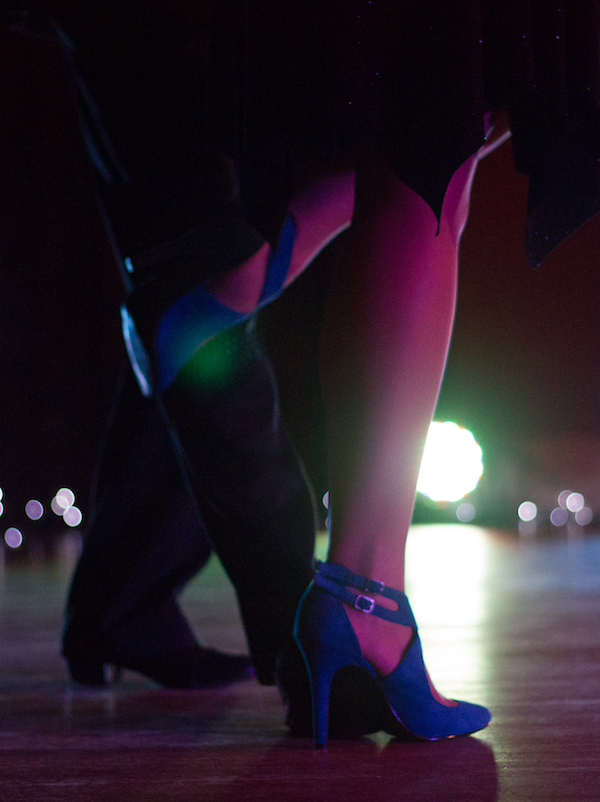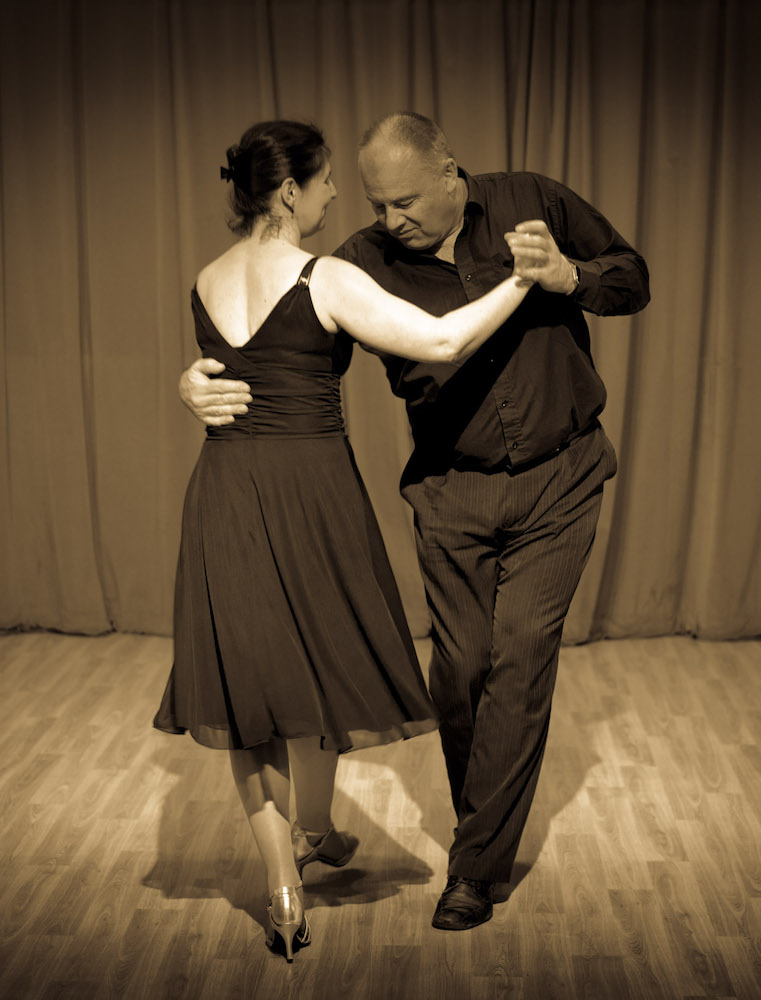
The Tangosynthesis Blog
with Graham and Nathalie
Why is Tango So Hard?
19 Feb 2018 - by Graham
Something we see and hear a lot in tango classes is frustration with the rate of progress that people feel they are making. People come along for a few weeks and enjoy the lessons, but the more they learn the more they realise how much they don't know and they start to wonder what's going wrong. Simple things like walking become a challenge, and we start to hear things like "I don't think tango is my dance", and "I'm never going to get this" by the end of the evening. A lot of this comes from their experiences with learning LeRoc and the rapid progress most people seem to make when they begin to learn it, but is the comparison justified? Or is it only natural that we find learning tango harder than learning LeRoc? LeRoc is a dance made up of large confident moves, and the size [read more...]
What Makes a Tango Teacher
05 Nov 2017 - by Graham
In my last post I wrote about how I accidentally became a tango teacher and turned Jivebeat from being a Modern Jive club into a Modern Jive and Argentine Tango club. But there has to be more to becoming a tango teacher than standing up and teaching your first class, doesn't there? There must surely be a process to follow or an exam to take? Or is there? Unike LeRoc which has a recognised path to training as a teacher and obtaining a teaching qualification, there is no equivalent qualification available in the UK for Argentine Tango. You can train and qualify as a ballroom tango teacher through the IDTA or other similar bodies, but ballroom tango is not the same as Argentine Tango, and as there are more differences than there are similarities between the two dances a qualification in ballroom tango would be of no real use. [read more...]
The Accidental Tango Teacher
02 Nov 2017 - by Graham
Not many people can say that they became a tango teacher entirely by accident, but that's definitely how it happened in my case. When I first started Jivebeat, I assumed it would always be predominantly about Modern Jive, with maybe a few guest teachers brought in from time to time to demonstrate other dance styles or maybe teach a 'fusion' class. I had qualified as a Modern Jive instructor, and all my efforts were going into developing that style and working out our curriculum. But then one evening in Sevenoaks after a fun but small beginners' class, I asked everyone what they would like to do next. I offered them a more advanced Modern Jive routine, maybe some dips and leans, styling or musicality tops, or perhaps they'd like to try some Argentine Tango. And unanimously they all decided they wanted to try some tango. I had been learning [read more...]
Tango - A Dance Without Steps.
24 Oct 2017 - by Graham
Whenever you think about dance, you think of footwork. There are basic steps that define the character of every type of dance, from the simple “step back, then in†of LeRoc, to the “forward, side, together†of waltz or the “one, two, three-and-four†of latin. The steps are the first stage in learning a new dance. You begin by learning the timing and how to position your feet in the correct places, then when you’ve got the hang of that you start to concentrate on where to put your body to improve balance, posture, and styling and make the dance begin to flow. But Argentine Tango doesn’t have any of that. It is that strangest of things, a dance without steps. When you first start to learn the tango the temptation is to follow the steps that the teacher is doing and try to copy the way his or [read more...]
Argentine Tango... Traditional or Modern?
23 Aug 2017 - by Graham
Argentine Tango is a dance that is steeped in tradition. From the music played by the great tango orchestras of the 1930s-1950s to the style and conventions of the social dance evenings (or 'milongas'), the argentine tango dance scene remains deeply connected to its roots in south America, and for some dancers this environment is as much a part of the dance as are the embrace and the steps. For these dancers, tango and its music cannot be separated; to dance one is to love the other and tango without the tradition is not really tango at all. This environment is often the first introduction that people get to the unique and evocative dance of Argentine Tango, and the 'other worldly' atmosphere created by the music and traditional tango culture is what encourages them to stick around. "Golden Age" music is used in the classes, and teachers can trace their [read more...]
[Older] - [Newer] - [Latest]
Click on the keywords to see related posts. You can use the Permalink to reference a specific post.
Navigation
[Older] - [Newer] - [Latest]
Search By Keyword
All Articles2020
Alternative
Anniversary
App
Argentine Tango
Beginner
Beginnings
Boleo
Christmas
Classes
Comparison
Dance Classes
Difficult
EITF
Evolution
Exercises
Expert
Festival
Freestyle
Guest Teaching
Isolation
Learning
Leroc
Lockdown
Milonga
modern
Music
Neotango
New Year
Nuevo
Pandemic
Price Changes
Radio
Review
Sevenoaks
Tandas
Tango
Tangocrisis
Teaching
Traditional
vals
Virus
X-Tango
XTango





